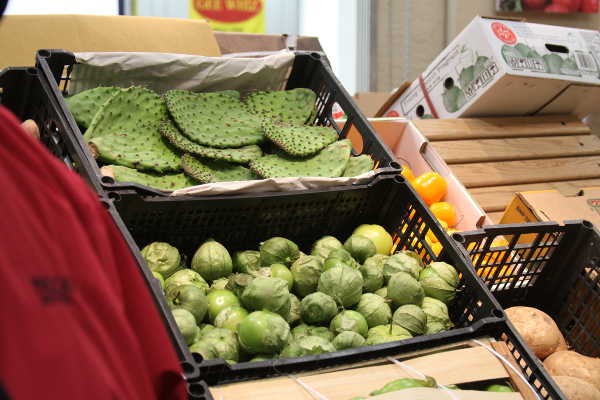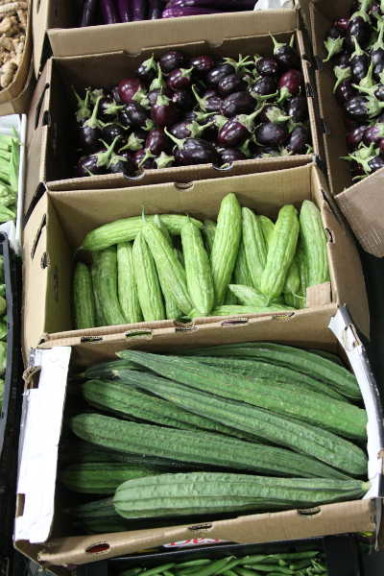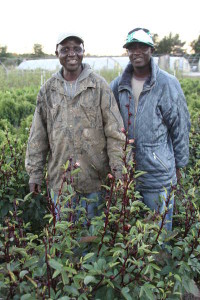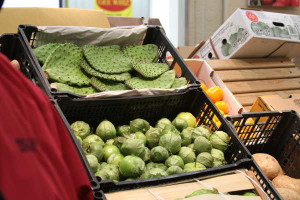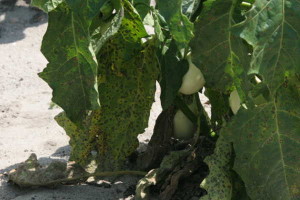How To Be Successful Growing Ethnic Vegetables
[blackoutgallery id=”64236″]
Thirty years ago, cilantro was unheard of in the U.S., but now, there’s almost as much cilantro grown in the states as parsley, says Rick VanVranken, head researcher at the Rutgers University Cooperative Extension, and “Marketing Matters” columnist for American Vegetable Grower.
That’s because cilantro began as an ethnic vegetable, grown specifically for use by small pockets of immigrants who wanted a taste of their home country.
And while not every ethnic vegetable will follow in cilantro’s footsteps to the mainstream markets, the market for ethnic vegetables is growing, and it’s a sustainable option for growers in certain areas of the country where ethnic communities congregate.
New Crops, New Opportunities
In South Jersey and the surrounding East Coast areas, VanVranken says there are now many opportunities for growers to enter the ethnic vegetable market by catering to the large Hispanic, Asian, and African populations.
A large portion of the ethnic vegetables being grown and sold cater to the Asian markets. Greens, mustards, and cabbages make up the bulk of the crops.
But the newest opportunities for growers, VanVranken says, are in the African vegetable market.
A recent wave of African immigrants coming from countries like Nigeria, Liberia, Sierra Leone, and Ghana are all in the market for crops specific to their culture, particularly African eggplants.
Morris Gbolo, owner of World Crops Farm in Buena Vista Township, NJ, grows three varieties of African eggplants for his customers that originally came from West African countries and now come from neighboring states to pick their own vegetables from his 10-acre operation.
Gbolo, who came to the U.S. from Liberia in 2002, started World Crops Farm in 2007. Instead of starting with the crops, however, Gbolo corralled his customer base first.
“I talked to church groups and sent out flyers,” Gbolo says. “I surveyed groups of people to see if there would be enough interest to make the farm successful, and there was.”
Carving A Niche
In the ethnic vegetable market, a loyal clientele is everything, VanVranken says.
That’s why these kinds of operations don’t work just anywhere. They must be located in an area surrounded by pockets of ethnic communities that specifically seek your crops.
“These operations are large enough to sustain a couple of growers producing specifically for a certain group of people,” VanVranken says. “These kinds of crops won’t replace 1,000
acres of traditional American eggplant, but maybe one or two growers of Asian and African eggplant can do well. [If there are] more than a few growers, the market is flooded and no one is making any money.”
If growers can find these niche markets, they can be successful, VanVranken says. But there are challenges.
He outlines three main hurdles facing growers entering this market:
- The tropical origin of the fruit requires long seasons for production;
- It is difficult to find a reliable seed source; and
- Most ethnic vegetables don’t grow like traditional American crops, meaning growers may have to adjust their production techniques to ensure they are marketable.
For example, some vegetables like bitter melon squash require trellising in order to allow them to grow straight, making them sellable, instead of curling on the ground. Others may require high tunnels or plastic mulch to extend the growing season.
Making Connections
And when it comes to marketing these crops, techniques may be different, as well.
The way to market ethnic vegetables depends on knowing your customer, and one method popular with many African communities is offering a U-Pick operation.
While VanVranken says the American U-Pick trend may not be as extensive as it once was, it is still a tradition in which many immigrant communities take part.
In fact, Gbolo’s operation is entirely U-Pick, and he says he has customers come from states as far as Massachusetts to load baskets of vegetables that they then take back to their community to sell.
Other communities, such as many Asian ones, take their crops to small distributors and grocery operations to sell.
Marketing efforts aside, ultimately the growers’ success is largely dependent on the connections they make with their customers, VanVranken says.
“You need to become a trusted member of the community you’re selling to,” he explains. “How that happens is hard to say. Whether they come to you or you reach out to them is different for every grower, but there has to be a strong relationship there so they can feel at home.”





